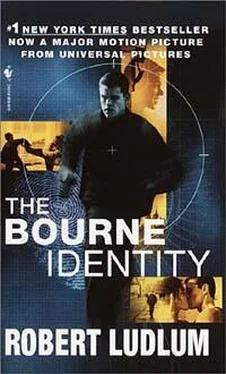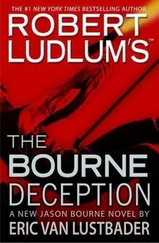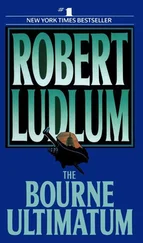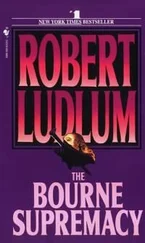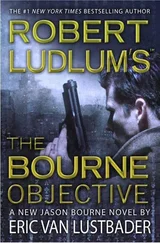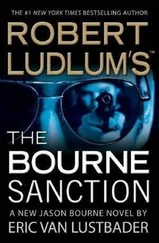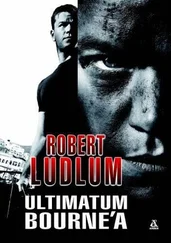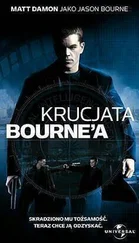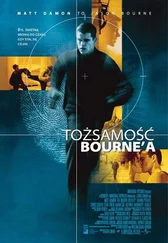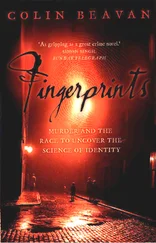Several minutes passed, and Marie bolted up.
“It’s here,” she said, fear in both her face and voice.
“Read it.”
“‘A particularly brutal form of punishment is said to be inflicted by Carlos and/or his small band of soldiers. It is death by a gunshot in the throat, often leaving the victim to die in excruciating pain.
It is reserved for those who break the code of silence or loyalty demanded by the assassin, or others who have refused to divulge information…’” Marie stopped, incapable of reading further. She lay back and closed her eyes. “He wouldn’t tell them and he was killed for it. Oh, my God …”
“He couldn’t tell them what he didn’t know,” said Bourne.
“But you knew!” Marie sat up again, her eyes open. “You knew about a gunshot in the throat! You said it!”
“I said it. I knew it. That’s all I can tell you.”
“How?”
“I wish I could answer that. I can’t.”
“May I have a drink?”
“Certainly.” Jason got up and went to the bureau. He poured two short glasses of whiskey and looked over at her. “Do you want me to call for some ice? Hervé’s on; it’ll be quick.”
“No. It won’t be quick enough.” She slammed the magazine down on the bed and turned to him—on him, perhaps. “I’m going crazy!”
“Join the party of two.”
“I want to believe you; I do believe you. But I … I …”
“You can’t be sure,” completed Bourne. “Any more than I can.” He brought her the glass. “What do you want me to say? What can I say? Am I one of Carlos’ soldiers? Did I break the code of silence or loyalty? Is that why I knew the method of execution?”
“Stop it!”
“I say that a lot to myself. ‘Stop it.’ Don’t think; try to remember, but somewhere along the line put the brakes on. Don’t go too far, too deep. One lie can be exposed, only to raise ten other questions intrinsic to that lie. Maybe it’s like waking up after a long drunk, not sure whom you fought with or slept with, or … goddamn it … killed.”
“No …” Marie drew out the word. “You are you. Don’t take that away from me.”
“I don’t want to. I don’t want to take it away from myself.” Jason went back to the chair and sat down, his face turned to the window. “You found … a method of execution. I found something else. I knew it, just as I knew about Howard Leland. I didn’t even have to read it.”
“Read what?”
Bourne reached down and picked up the three-year-old issue of Potomac Quarterly. The magazine was folded open to a page on which there was a sketch of a bearded man, the lines rough, inconclusive, as if drawn from an obscure description. He held it out for her.
“Read it,” he said. “It starts with the upper left, under the heading ‘Myth or Monster.’ Then I want to play a game.”
“A game?”
“Yes. I’ve read only the first two paragraphs; you’ll have to take my word for that.”
“All right.” Marie watched him, bewildered. She lowered the magazine into the light and read.
MYTH OR MONSTER
For over a decade, the name “Carlos” has been whispered in the back streets of such diverse cities as Paris, Teheran, Beirut, London, Cairo, and Amsterdam. He is said to be the supreme terrorist in the sense that his commitment is to murder and assassination in themselves, with no apparent political ideology. Yet there is concrete evidence that he has undertaken profitable executions for such extremist radical groups as the PLO and Baader-Meinhof, both as teacher and profiteer. Indeed, it is through his infrequent gravitation to, and the internal conflicts within such terrorist organizations that a clearer picture of “Carlos” is beginning to emerge. Informers are coming out of the bloodied spleens and they talk.
Whereas tales of his exploits give rise to images of a world filled with violence and conspiracy, high-explosives and higher intrigues, fast cars and faster women, the facts would seem to indicate at least as much Adam Smith as Ian Fleming. “Carlos” is reduced to human proportions and in the compression a truly frightening man comes into focus. The sado-romantic myth turns into a brilliant, blood-soaked monster who brokers assassination with the expertise of a market analyst, fully aware of wages, costs, distribution, and the divisions of underworld labor. It is a complicated business and “Carlos” is the master of its dollar value.
The portrait starts with a reputed name, as odd in its way as the owner’s profession. Ilich Ramirez Sanchez. He is said to be a Venezuelan, the son of a fanatically devoted but not very prominent Marxist attorney (the Ilich is the father’s salute to Vladimir Ilyich Lenin, and partially explains “Carlos’ ” forays into extremist terrorism) who sent the young boy to Russia for the major part of his education, which included espionage training at the Soviet compound in Novgorod. It is here that portrait fades briefly, rumor and speculation now the artists. According to these, one or another committee of the Kremlin that regularly monitors foreign students for future infiltration purposes saw what they had in Ilich Sanchez and wanted no part of him. He was a paranoid, who saw all solutions in terms of a well-placed bullet or bomb; the recommendation was to send the youth back to Caracas and disassociate any and all Soviet ties with the family. Thus rejected by Moscow, and deeply antithetical to western society, Sanchez went about building his own world, one in which he was the supreme leader. What better way to become the apolitical assassin whose services could be contracted for by the widest range of political and philosophical clients?
The portrait becomes clearer again. Fluent in numerous languages including his native Spanish as well as Russian, French, and English, Sanchez used his Soviet training as a springboard for refining his techniques. Months of concentrated study followed his expulsion from Moscow, some say under the tutelage of the Cubans, Che Guevera in particular. He mastered the science and handling of all manner of weaponry and explosives; there was no gun he could not break down and reassemble blindfolded, no explosive he could not analyze by smell and touch and know how to detonate in a dozen different ways.
He was ready; he chose Paris as his base of operations and the word went out. A man was for hire who would kill where others dared not.
Once again the portrait dims as much for lack of birth records as anything else. Just how old is “Carlos”? How many targets can be attributed to him and how many are myth—self-proclaimed or otherwise? Correspondents based in Caracas have been unable to unearth any birth certificates anywhere in the country for an Ilich Ramirez Sanchez. On the other hand, there are thousands upon thousands of Sanchezes in Venezuela, hundreds with Ramirez attached; but none with an Ilich in front. Was it added later, or is the omission simply further proof of “Carlos”’ thoroughness? The consensus is that the assassin is between thirty-five and forty years of age. No one really knows.
A GRASSY KNOLL IN DALLAS?
But one fact not disputed is that the profits from his first several kills enabled the assassin to set up an organization that might be envied by an operations analyst of General Motors. It is capitalism at its most efficient, loyalty and service extracted by equal parts fear and reward.
The consequences of disloyalty are swift in coming—death—about so, too, are the benefits of service—generous bonuses and huge expense allowances. The organization seems to have hand-picked executives everywhere; and this well-founded rumor leads to the obvious question. Where did the profits initially come from? Who were the original kills?
Читать дальше
